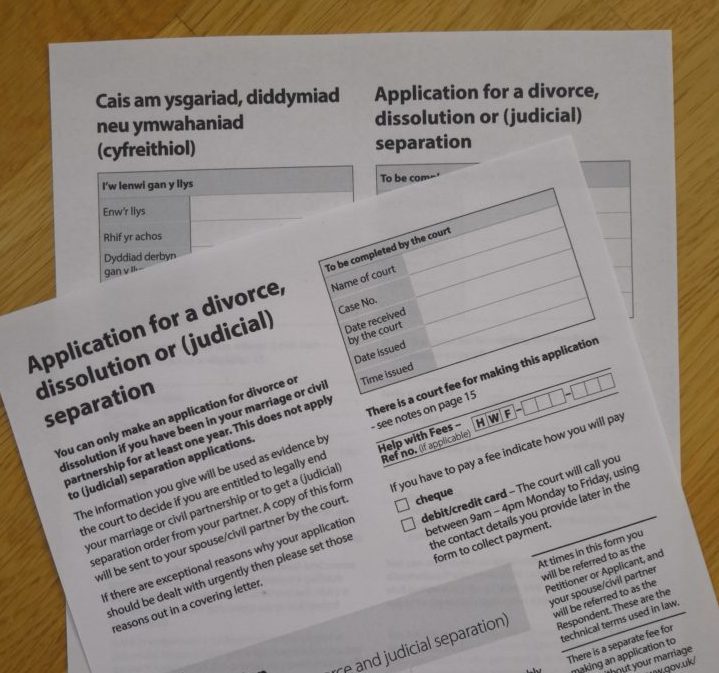The day when a no-fault or no-blame divorce becomes one of the legally-accepted grounds for divorce in England and Wales could be inching a step closer.
Currently (August 2018), couples seeking a divorce must do so under the grounds provided in the Matrimonial Causes Act 1973. And while the Act was an attempt to consolidate previous modernising legislation, calls for more changes to divorce law continue to this day.
And a recent divorce case has re-ignited the fault-free divorce debate.
The case of Tini Owens
The case in question is that of Tini Owens, who in May 2018 lost her divorce battle after taking her case to the highest court in the land (The Supreme Court).
After 40 years of marriage, Tini Owens, sought a divorce from her husband under Section 1(2)(b) of the Matrimonial Causes Act 1973, on the grounds that he ‘has behaved in such a way that [she] cannot reasonably be expected to live with [him]’.
Hugh Owens, the husband, contested the divorce. By the time of the final hearing, Tini Owens had made 27 allegations in support of her application, including the allegation that Mr Owens prioritised his work over their home life and that he showed her no love or affection. Her case was dismissed.
In 2017, an appeal lodged by Tini Owens at the Court of Appeal was also dismissed.
On examining the effect of dismissing the case, the Court of Appeal judge questioned whether the current law is fit for purpose.
Not fit for purpose?
The reasons for applying for a divorce (or making a divorce petition, as it is known), under the Matrimonial Causes Act 1973, are: adultery, unreasonable behaviour, desertion, separation for more than 2 years (with the consent of the other partner) and separation for at least 5 years.
If a divorcing couple do not meet the criteria for the current no-fault grounds, the only option open to them is to apply for their divorce using one of the two fault-based grounds: adultery or unreasonable behaviour.
According to the most recent figures published by the Office of National Statistics, unreasonable behaviour has remained the most common ground. for divorce among opposite-sex couples – with 36% of all husbands and 51% of all wives (who have been granted a decree absolute) citing behaviour in their divorce petitions.
These individuals will have had to make allegations of certain behaviours against their spouse.
Making allegations about behaviour can sour divorce proceedings from the start and ruin the potential for an amicable agreement in other areas linked to the divorce, such as arrangements for a couple’s children, or their joint finances.
And with the divorce rate currently at 42% for same-sex couples, the need for change is strong, given the number of couples affected.
The look and feel of a no-blame divorce
No-blame divorce grounds are nothing new. They have been in force in Australia, France and almost all of the USA since the 1970s. And in France, they are the most popular grounds for divorce.
The UK came close to enacting no-blame divorce grounds under the Family Law Act 1996, but these provisions were never brought into force and were repealed by the Children and Families Act 2014.
Resolution, the training and support organisation for collaborative lawyers in England and Wales, believes couples should be able to divorce each other without blame.
Resolution proposes a different divorce procedure involving one or both partners giving notice to the other that the marriage has broken down irretrievably. The divorce could then proceed, and after six months the divorce would be finalised.
This approach, argues Resolution, increases the chances of a successful resolution outside of the courtroom by putting both partners on an equal footing and removing the element of blame.
Lady Hale, the most senior female judge in the country and President of The Supreme Court, also supports a blame-free approach and first called for such divorce grounds some 20 years ago. In a recent interview in The Times, Lady Hale indicated that divorce legislation needed to be modernised to end the requirement for one person to be at fault.
The waiting game
Under her proposed no-fault arrangement, Lady Hale recommends that divorces take longer and that they include a one-year cooling off period during which couples can sort out their child and financial arrangements, before finalising their divorce.
It remains to be seen when and how the proposed changes may be adopted.
In the meantime, Tini Owens must wait until 2020 before she can make a fresh divorce petition on the grounds of separation. And by that time, she will be free to do so without the consent of her husband.
The question is, how many more couples will be denied the opportunity to end their marriages sooner rather than later – without blame, and without acrimony?
Copyright © Going to Court Alone – Debbie Thomas

